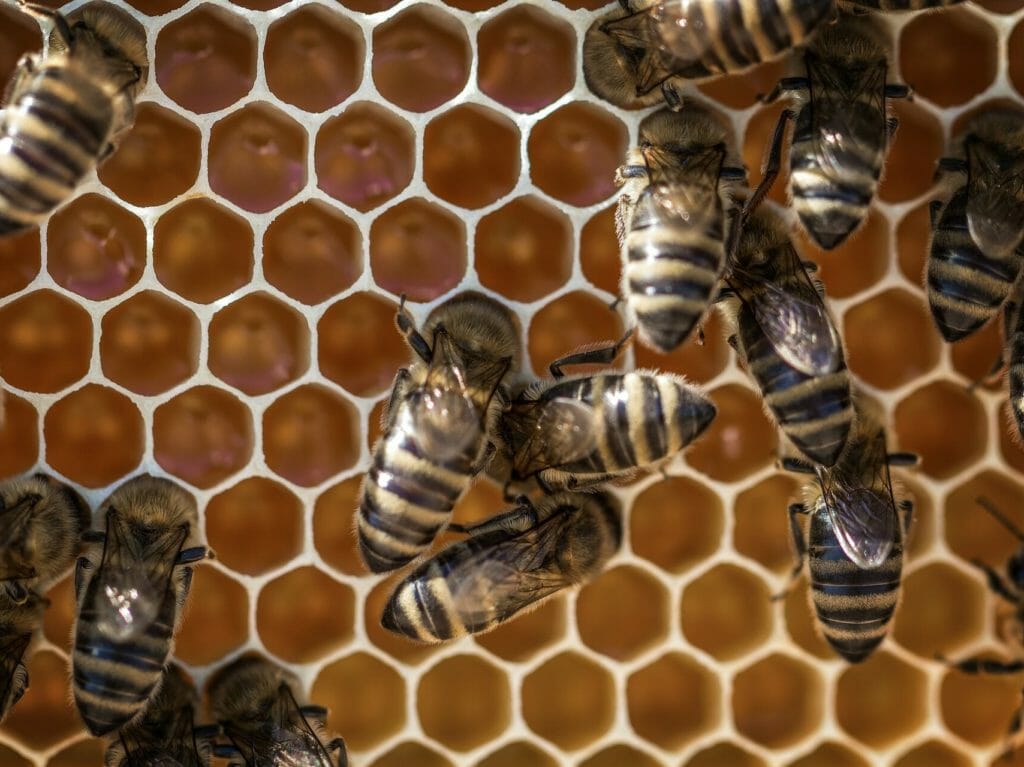RMIT researchers believe that their study shows honey bees can do basic math. Did these bees really perform addition and subtraction to get through a maze?
Honey bees are remarkable in so many ways. Anyone who works with them can vouch for that. But recent research into honey bee intelligence is finding that those tiny bee brains are even more remarkable than we first thought. A recent Australian study at RMIT has implied that honey bees can do math!
News of the study surfaced on February 7 with a segment on the ABC’s Radio National AM show. This was followed by an ABC News editorial that afternoon.
According to the ABC, the researchers at RMIT taught honeybees to do simple addition and subtraction. They did this using colour coded mazes, which the bees had to solve to get a sugar water reward. When they got the answer wrong, they received a bitter quinine solution.
Through trial and error the bees seemed to learn how to get straight to the sugar water and avoid the quinine. The researchers believe the bees did this by recognising and solving the simple arithmetic problems posed. This meant performing addition when they came across blue shapes, and subtraction if they came across yellow.
But the RMIT study hasn’t convinced some experts. Gizmodo spoke to Clint Perry, an expert on invertebrate intelligence. Perry works at the Bee Sensory and Behavioural Ecology Lab at Queen Mary University of London. He believes the RMIT researchers didn’t consider all the alternative strategies used by bees.
“When [the bees] pass the initial entrance and stimulus, they just have to find the stimulus in the maze that was most similar to the one first seen,” Perry told Gizmodo. “If they learnt this well, their performance should be about 70 per cent—which matches the behavioural results reported quite well.”
To which he added: “The ability to add and subtract is a higher-level cognitive ability and to claim that an insect can do this is extraordinary and therefore requires extraordinary evidence. Bees are impressive and might be able to do arithmetic, but the results presented here do not convince me.”
He elaborated to Gizmodo that perhaps the bees were perceiving something like “greater surface area” or “less surface area,” or something else the scientists haven’t considered, rather than the quantity of elements.
But the buzz around bee numeracy goes back a little further, with another RMIT study in June 2018. The result of this study appears to be more accepted. It showed that bees can grok the concept of zero! And this is a huge deal.
Until recently, we thought this trait was unique to humans. Some primates, plus an African Gray Parrot named Alex, have since shown the ability, according to ScienceNews. But for the tiny brain of an invertebrate like the honey bee to do this is significant.
According to The Conversation, there are four stages in human development for grasping the concept of zero. Honey bees have reached stage three!
This means they don’t just understand zero as an absence or “nothingness”. They understand “that zero can have a numeric value and belongs at the low end of the positive number line”! When you think about it, this is a pretty abstract and advanced concept for a brain only a few millimetres wide.
Finally, there is another, more obvious mathematical habit of honey bees. This one has captured the minds of humans for millennia: Honeycomb Geometry.
Mathematicians still speculate on whether bees actively engage geometry to build honeycomb. But as the mathematics publication The Aperiodical admits, Charles Darwin had a more likely answer.
Darwin, and others before him, believed that honeybees likely built round cells to begin with, like the bumble bee. It follows that, “if bees built regular arrangements of cylindrical or spherical cells closer and closer together over the generations, then at some point they would crowd together into the famous honeycomb arrangement”.
That’s not to take away from the beauty of the honey bees’ achievements. The fact that some of these abilities have become innate to the species is a feat in itself. Plus, what honey bees are capable of with less than a million neurons (human brains average 100 billion) has big implications for us.
Scientists are now applying honey bee brain research and modelling in unexpected areas. From developing Artificial Intelligence to (it’s hoped, one day) modelling the human brain. Our brains are so complex that scientists have recognised that they need to begin with a smaller model! So we may one day owe honey bees for a lot more than the food on our plates, as if that wasn’t enough!
Related: Honey Bee Intelligence Part 1: The Research Buzz around Bee Brains.

Visit the Bee2Bee online shop for beekeeping equipment and supplies.




